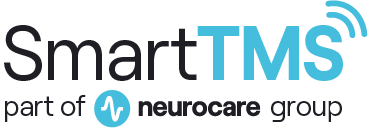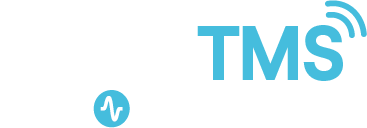New Horizons in Mental Health: The Powerful Synergy of TMS and Psychotherapy
January 30, 2025 - Smart TMS

Twenty to thirty percent of patients with mood or anxiety disorders do not adequately respond to conventional therapeutic treatments (Scholten et al., 2013), highlighting the necessity for innovative approaches such as non-invasive brain stimulation (NIBS) to enhance therapeutic outcomes (Bajbouj & Padberg, 2014). One such innovation is the combination of transcranial magnetic stimulation (TMS) with psychotherapy, which has shown significant potential in treating a variety of psychiatric disorders, particularly in cases resistant to traditional therapies
What is Psychotherapy?
Psychotherapy is a form of treatment that involves structured conversations between a trained therapist and a patient, aimed at addressing emotional, psychological, or behavioural issues. Various forms of psychotherapy exist, including cognitive behavioural therapy (CBT), psychodynamic therapy, and exposure therapy. These approaches help individuals develop better coping mechanisms, change negative thought patterns, and understand underlying emotional conflicts. The ultimate goal of psychotherapy is to improve mental health and well-being through a collaborative, patient-centred approach (American Psychological Association, 2023).
Transcranial Magnetic Stimulation (TMS)
TMS is a non-invasive brain stimulation technique that uses magnetic fields to modulate neural activity in specific regions of the brain. A magnetic coil is placed near the scalp, delivering brief, targeted pulses of electromagnetic energy to stimulate or inhibit neural circuits, most commonly in the prefrontal cortex. TMS is widely used in the treatment of major depressive disorder (MDD) and other psychiatric conditions, particularly in individuals who do not respond to medication or psychotherapy alone (George et al., 2020). Unlike electroconvulsive therapy (ECT), TMS does not require anaesthesia and is generally well-tolerated, with fewer cognitive side effects.
Brain Stimulation as a Third Treatment Modality
Non-invasive brain stimulation techniques (NIBS) such as TMS and transcranial direct current stimulation (tDCS) are showing immense promise in the treatment of psychiatric disorders, particularly when combined with psychotherapy. Bajbouj and Padberg (2014) emphasize the potential of integrating NIBS with psychotherapy to create a more comprehensive, multi-modal approach for patients who do not respond to standard therapies. This combined treatment has shown effectiveness in improving critical cognitive functions like working memory, attention, and emotional regulation—functions that are central to psychotherapeutic interventions. For example, significant improvements in verbal working memory and emotion regulation have been observed in patients receiving NIBS interventions such as TMS in conjunction with psychotherapy (Bajbouj & Padberg, 2014; Hoppen et al., 2023).
A study by Donse et al. (2017) further supports the benefits of combining TMS and psychotherapy in treating major depressive disorder (MDD). In this large, naturalistic study, the combination of repetitive TMS (rTMS) and psychotherapy—primarily cognitive behavioural therapy (CBT)—resulted in a 66% response rate and a 56% remission rate at the end of treatment, figures notably higher than those seen with either treatment alone. Even more compelling is the finding that 60% of remissions were sustained at the six-month follow-up, indicating potential long-term benefits. Interestingly, no significant differences were found between high-frequency (10 Hz) and low-frequency (1 Hz) rTMS protocols, suggesting that the combination of rTMS and psychotherapy can be effective across a range of stimulation frequencies (Donse et al., 2017). The integration of TMS with psychotherapy also shows promise in treating post-traumatic stress disorder (PTSD). A review of five randomized controlled trials (RCTs) found significant reductions in core PTSD symptoms—such as hyperarousal, intrusive memories, and avoidance behaviors—when TMS was combined with exposure-based therapies or CBT. In one notable study, low-frequency (1 Hz) TMS over the right dorsolateral prefrontal cortex (DLPFC) combined with exposure therapy led to a significant reduction in PTSD symptoms compared to either treatment alone. These synergistic effects were sustained for up to 2–3 months post-treatment, further highlighting the long-term potential of this approach (Petrosino et al., 2021).
The Role of Frequency and Location in TMS Outcomes
While research has yet to establish definitive protocols for TMS frequency and target locations, early findings indicate that the concurrent use of NIBS and psychotherapy offers benefits regardless of specific parameters. Meta-analyses suggest that higher-frequency TMS (e.g., 10 Hz or 20 Hz) may have slightly larger effect sizes when combined with psychotherapy, but both high- and low-frequency stimulations have demonstrated efficacy (Petrosino et al., 2021). Additionally, no significant differences were observed in treatment outcomes based on whether the right or left DLPFC was stimulated. This suggests that the success of TMS-psychotherapy combinations may depend more on the interaction of neurobiological and psychological mechanisms than on the exact stimulation parameters used.
For treatment-resistant depression (TRD), integrating TMS with psychotherapy and medications has been explored in various studies. Kochanowski et al. (2024) reviewed seven studies on this combination and found that, in an open-label study with 196 participants, MDD symptoms decreased by 55.9% when TMS was combined with psychotherapy. Although some randomized controlled trials (RCTs) yielded mixed results, one small trial (n = 14) reported an 85.7% remission rate with combined treatment versus 42.9% for TMS alone. Moreover, combining mindfulness-based stress reduction (MBSR) with TMS resulted in a 26.7% reduction in symptoms in one RCT, compared to 18.3% in the control group (Kochanowski et al., 2024).
Functional Connectivity and Mechanisms of Change
Understanding the neurobiological mechanisms underpinning the success of these combined treatments is crucial. Davis et al. (2023) explored the network-level dynamics of rTMS combined with psychotherapy in treating major depressive disorder (MDD). Their findings revealed that this multimodal approach normalizes both hyperactive and hypoactive brain networks, leading to significant improvements in cognitive and emotional processing. On average, participants experienced a 50% reduction in Hamilton Depression Rating Scale (HDRS-17) scores, indicating a substantial improvement in depressive symptoms. While immediate post-treatment outcomes were promising, the study emphasised the importance of further research to explore the long-term durability of these effects (Davis et al., 2023).
The Future of Combined Treatments
As the research stands, combining TMS or other NIBS techniques with psychotherapy offers a novel and promising approach for individuals who have not benefited from traditional treatment methods. Future directions include conducting larger multicenter trials to determine the most effective protocols and exploring the mechanisms by which TMS influences therapeutic outcomes. By focusing on cognitive endophenotypes, such as memory and emotion regulation, these combined therapies hold the potential to create more personalized and effective treatment strategies for a range of psychiatric disorders.
To conclude, the integration of TMS with psychotherapy could pave the way for innovative, multimodal treatments in psychiatry. As research continues to unfold, the hope is that these approaches will offer new pathways to recovery for patients who have struggled with treatment-resistant conditions. The potential for long-lasting improvements in mental health through this combination therapy is a beacon of hope for the future of psychiatric care.
References:
Kochanowski, Brian MA; Kageki-Bonnert, Karina; Pinkerton, Elizabeth A. BS; Dougherty, Darin D. MD∗; Chou, Tina PhD∗. A Review of Transcranial Magnetic Stimulation and Transcranial Direct Current Stimulation Combined with Medication and Psychotherapy for Depression. Harvard Review of Psychiatry 32(3):p 77-95, 5/6 2024. | DOI: 10.1097/HRP.0000000000000396






